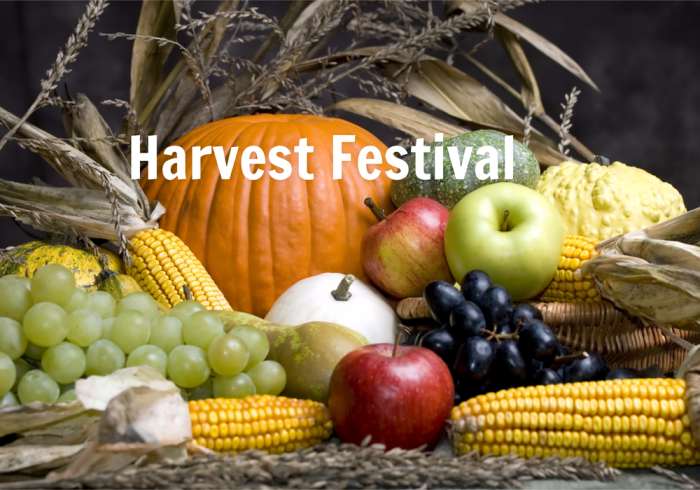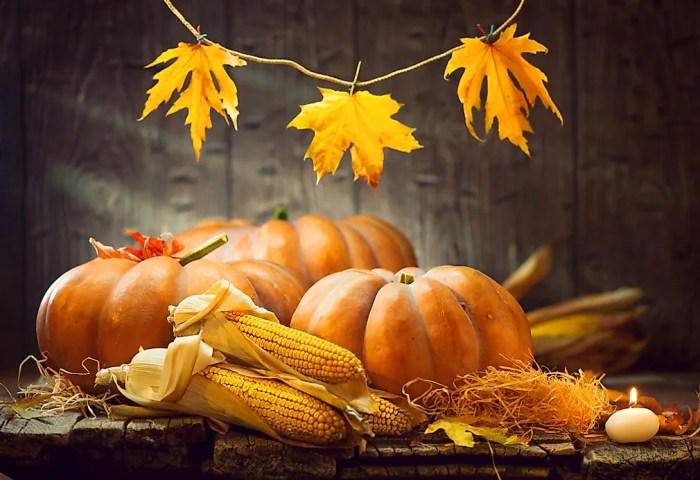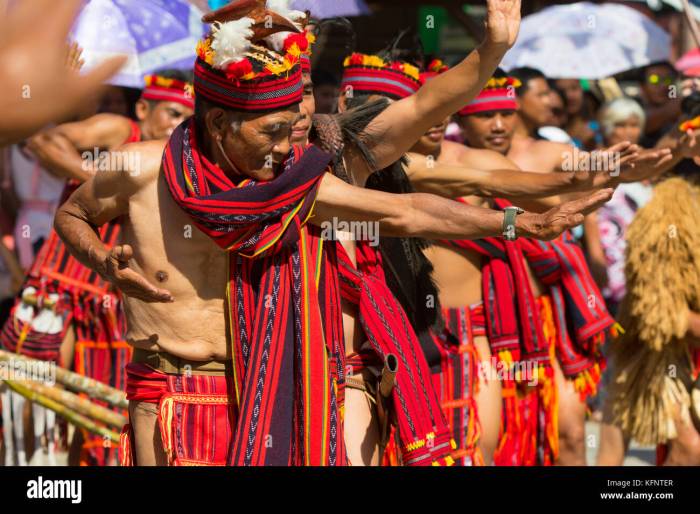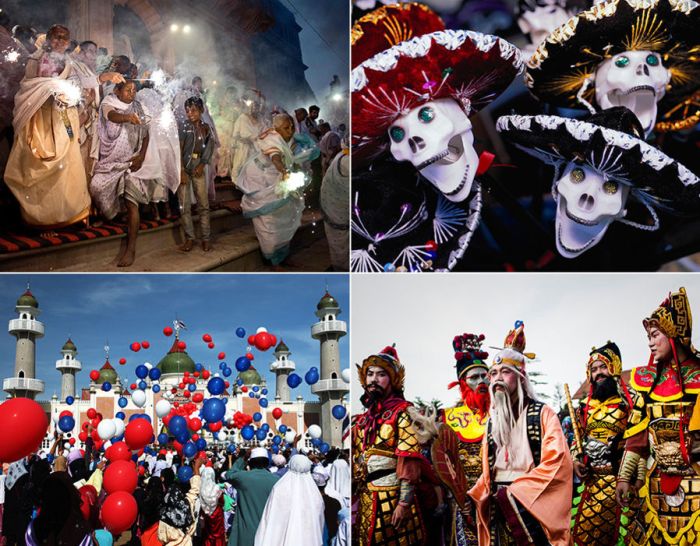
Harvest Festivals and Seasonal Celebrations represent a rich tapestry of cultural traditions, woven from centuries of agricultural practices and spiritual beliefs. From the vibrant hues of autumn leaves to the bountiful harvest feasts, these celebrations offer a glimpse into the deep connection between humanity and the natural world. This exploration delves into the history, significance, and modern interpretations of these cherished events across diverse cultures, highlighting their enduring relevance in a rapidly changing world.
We will examine the historical evolution of harvest festivals, tracing their origins and adaptations across various regions. The diverse customs and traditions associated with these celebrations will be explored, including the symbolic significance of food and the unique rituals practiced. Further, we will analyze the challenges and opportunities involved in preserving these traditions in modern society, alongside examining luxurious travel experiences themed around harvest celebrations.
History and Evolution of Harvest Festivals

Harvest festivals, celebrations marking the end of the growing season and the gathering of crops, are deeply rooted in human history, reflecting our enduring relationship with the land and its bounty. These festivals are not merely celebrations of abundance; they are complex cultural expressions interwoven with religious beliefs, social structures, and agricultural practices. Their evolution reveals much about the changing relationship between humans and their environment.Harvest festivals have been observed across diverse cultures for millennia, their forms varying significantly based on geographical location, climate, and prevailing belief systems.
Common themes, however, unite these seemingly disparate celebrations: thanksgiving for a bountiful harvest, prayers for continued prosperity, and communal feasting. The historical significance of these events lies in their ability to foster social cohesion, reinforce community bonds, and provide a framework for the transmission of cultural values and agricultural knowledge across generations.
Historical Significance of Harvest Festivals Across Cultures
Ancient civilizations developed elaborate harvest rituals. In ancient Egypt, the festival of Opet celebrated the annual flooding of the Nile, crucial for crop growth, with elaborate processions and offerings to the gods. Similarly, the ancient Greeks held festivals honoring Demeter, the goddess of agriculture, with sacrifices and theatrical performances. In the Roman Empire, the Consualia, a harvest festival honoring Consus, the god of stored grain, involved horse races and public games, highlighting the importance of agriculture to the empire’s strength and stability.
These examples demonstrate the deep connection between religious beliefs and agricultural cycles, a pattern repeated across many cultures. The rituals were not merely celebrations but also vital components of ensuring successful harvests in subsequent years.
Comparison of Harvest Traditions in Three Regions
To understand the diversity of harvest celebrations, we can compare traditions from three distinct regions: Europe, North America, and East Asia.In Europe, harvest festivals, often tied to Christian traditions, vary considerably. In the British Isles, harvest festivals in churches often involve the display of harvested crops and produce, alongside prayers of thanksgiving. These celebrations have roots in ancient pagan festivals, blended with Christian beliefs over centuries.
In contrast, many parts of continental Europe celebrate harvest with lively village festivals, including parades, dances, and communal meals featuring seasonal foods. The focus shifts from strictly religious observance to community bonding and celebration.North American harvest festivals are heavily influenced by European traditions, particularly those of the early settlers. Thanksgiving, the most prominent example, combines elements of gratitude for the harvest with broader themes of family and national identity.
It has evolved from its Puritan origins to become a secular national holiday, encompassing diverse cultural expressions. However, smaller, localized harvest festivals still exist, reflecting the diversity of regional agricultural practices and ethnic backgrounds.In East Asia, harvest festivals are often associated with the lunar calendar. The Mid-Autumn Festival in China, Vietnam, and other East Asian countries is a major harvest festival, marked by the consumption of mooncakes and family gatherings.
The festival’s symbolism is rooted in lunar cycles and agricultural practices, signifying the end of the harvest and the anticipation of winter. Unlike many Western harvest festivals with strong religious overtones, the Mid-Autumn Festival emphasizes family togetherness and the appreciation of nature’s bounty.
Evolution of Harvest Festivals Over Time
Harvest festivals have adapted to significant societal changes throughout history. The mechanization of agriculture, urbanization, and globalization have all impacted how these celebrations are observed. The shift from agrarian societies to industrialized ones has led to a decline in the direct involvement of many people in the harvest process. Consequently, the communal aspect of harvest celebrations has, in some areas, diminished, although in many instances, the festivals have become occasions for celebrating heritage and promoting rural communities.The rise of secularism in many parts of the world has also influenced the character of harvest festivals.
While religious elements remain significant in some contexts, many celebrations have become more inclusive and less explicitly tied to religious doctrines. Globalization, meanwhile, has led to the exchange of cultural practices, resulting in hybrid celebrations that blend elements from different traditions.
Timeline of Key Milestones in the Development of Harvest Festivals, Harvest Festivals and Seasonal Celebrations
A simplified timeline might include:* Prehistoric Era – Present: Early forms of harvest celebrations, tied to agricultural cycles and possibly animistic beliefs.
Ancient Civilizations (e.g., Egypt, Greece, Rome)
Development of elaborate harvest rituals integrated with religious practices and social structures.
Medieval Europe
The blending of pagan harvest traditions with Christian festivals, creating new forms of celebration.
17th-18th Centuries (North America)
The establishment of Thanksgiving and other harvest celebrations by European settlers.
19th-20th Centuries
The influence of industrialization and urbanization on the character of harvest festivals.
21st Century
Globalization and secularization continue to shape the evolution of harvest festivals, leading to greater diversity and adaptation.
Types of Harvest Festivals and Seasonal Celebrations

Harvest festivals, celebrated across the globe for millennia, represent a profound connection between humanity and the natural world. These celebrations mark the culmination of the agricultural cycle, offering a time for thanksgiving, community bonding, and the anticipation of winter’s arrival. Their diverse forms reflect the unique cultural and environmental contexts in which they’ve developed.
A Global Overview of Harvest Festivals
Harvest festivals are incredibly diverse, varying significantly in their traditions, dates, and symbolic representations. These celebrations often blend agricultural practices with religious or spiritual beliefs, creating rich tapestry of customs. The following provides a glimpse into the variety of harvest celebrations across different regions and cultures.
Asia: Many Asian cultures have deeply rooted harvest festivals. In China, the Mid-Autumn Festival features mooncakes and family reunions. In Japan, the Niiname-sai, an Imperial harvest festival, is held to give thanks for the year’s rice harvest. India’s Pongal, a four-day harvest festival in Tamil Nadu, involves elaborate rituals and the preparation of special dishes. Across Southeast Asia, various festivals celebrate rice harvests with unique dances, offerings, and feasts.
Europe: European harvest festivals often have strong historical ties to ancient pagan traditions, subsequently interwoven with Christian celebrations. Oktoberfest in Germany, though not strictly a harvest festival, is associated with the end of the harvest season and the brewing of new beer. In the United Kingdom, harvest festivals are typically held in churches, featuring thanksgiving services and the display of harvested crops.
Similar traditions are observed in many other European countries, adapting to local agricultural practices and cultural norms.
Africa: Across the diverse regions of Africa, harvest festivals are deeply integrated into local customs and beliefs. Celebrations often involve music, dance, storytelling, and communal feasting. The specific crops and rituals vary widely depending on the region and the primary agricultural products. Many festivals are tied to specific agricultural cycles, with different communities celebrating at different times of the year.
North and South America: In North America, Thanksgiving is a prominent harvest celebration, blending elements of European and Indigenous traditions. In South America, various indigenous communities maintain their unique harvest festivals, often involving ceremonies, offerings, and traditional foods. These celebrations are often deeply spiritual, emphasizing the connection between the people and the land.
Unique Customs and Traditions
Many harvest festivals feature unique customs and traditions passed down through generations. For example, the scarecrow plays a significant role in many Western harvest celebrations, acting as a symbolic guardian of the crops. In some cultures, elaborate costumes and masks are worn during harvest festivals, often representing spirits or deities associated with agriculture. Many festivals involve specific dances or songs dedicated to the harvest, celebrating the bounty of the land.
The sharing of food is almost universal, with many cultures preparing special dishes and delicacies for these occasions. Specific foods are often symbolic, representing abundance, prosperity, and the cyclical nature of life.
Comparison of Five Harvest Celebrations
| Festival | Date | Key Events | Symbolic Foods |
|---|---|---|---|
| Thanksgiving (North America) | Fourth Thursday of November | Family gatherings, feasting, parades | Roast turkey, stuffing, cranberry sauce, pumpkin pie |
| Mid-Autumn Festival (East Asia) | 15th day of the 8th month of the lunar calendar | Moon gazing, family reunions, lantern displays, eating mooncakes | Mooncakes, pomelos |
| Pongal (India) | January 14-17 | Boil of new rice, prayers to the Sun God, cattle worship | Sweet rice Pongal, sugarcane |
| Harvest Home (UK) | Autumn (variable date) | Church services, processions, harvest suppers | Seasonal fruits, vegetables, bread |
| Sukkot (Jewish) | 15th to 21st of Tishrei (September/October) | Building Sukkahs (temporary shelters), prayers, meals in the Sukkah | Fruits, vegetables, and other foods representing the harvest |
Visual Representations of Harvest Festivals
1. Thanksgiving Parade (North America): Imagine a vibrant street scene filled with giant balloons shaped like cartoon characters, marching bands playing lively tunes, and elaborate floats depicting scenes of harvest abundance. People line the streets, cheering and waving, creating a festive and joyful atmosphere. The overall impression is one of community spirit and celebration.
2. Mid-Autumn Festival Lantern Displays (East Asia): Envision a night scene illuminated by thousands of colorful lanterns, hanging from trees and buildings, casting a warm glow over the streets and parks. People carry lanterns of various shapes and sizes, creating a magical and enchanting atmosphere. The lanterns themselves are works of art, some depicting traditional designs, others showcasing contemporary themes.
3. Pongal Rice Boiling Ceremony (India): Picture a bustling courtyard where families gather around earthen pots filled with newly harvested rice, diligently stirring the boiling grains. The air is filled with the aroma of freshly cooked rice and the sounds of traditional chants and prayers. The ceremony is both a religious act and a communal event, fostering a sense of unity and shared purpose.
In conclusion, Harvest Festivals and Seasonal Celebrations are far more than simply gatherings to celebrate a successful harvest; they are living testaments to humanity’s enduring connection with nature, its agricultural heritage, and its diverse cultural expressions. By understanding their history, significance, and modern adaptations, we can appreciate the profound impact these celebrations have on our communities and our collective understanding of the world around us.
Whether experienced through traditional customs or luxurious travel, the spirit of these festivals endures, offering a timeless opportunity for reflection, community, and celebration.
FAQ Section
What is the most common food found in harvest festivals worldwide?
While highly variable by region, grains such as bread and various forms of baked goods are frequently found at harvest festivals globally, often alongside seasonal fruits and vegetables.
Are harvest festivals only celebrated in autumn?
No, while many are associated with autumn harvests, harvest festivals occur throughout the year, reflecting the diverse agricultural cycles across different regions and climates.
How have harvest festivals adapted to modern life?
Modern adaptations include incorporating contemporary elements into traditional celebrations, emphasizing sustainability, and using technology to promote and share these events with wider audiences.
What is the environmental impact of large-scale harvest festivals?
Large-scale festivals can create waste and environmental strain. Sustainable practices, such as waste reduction and responsible sourcing, are increasingly emphasized to mitigate these impacts.


